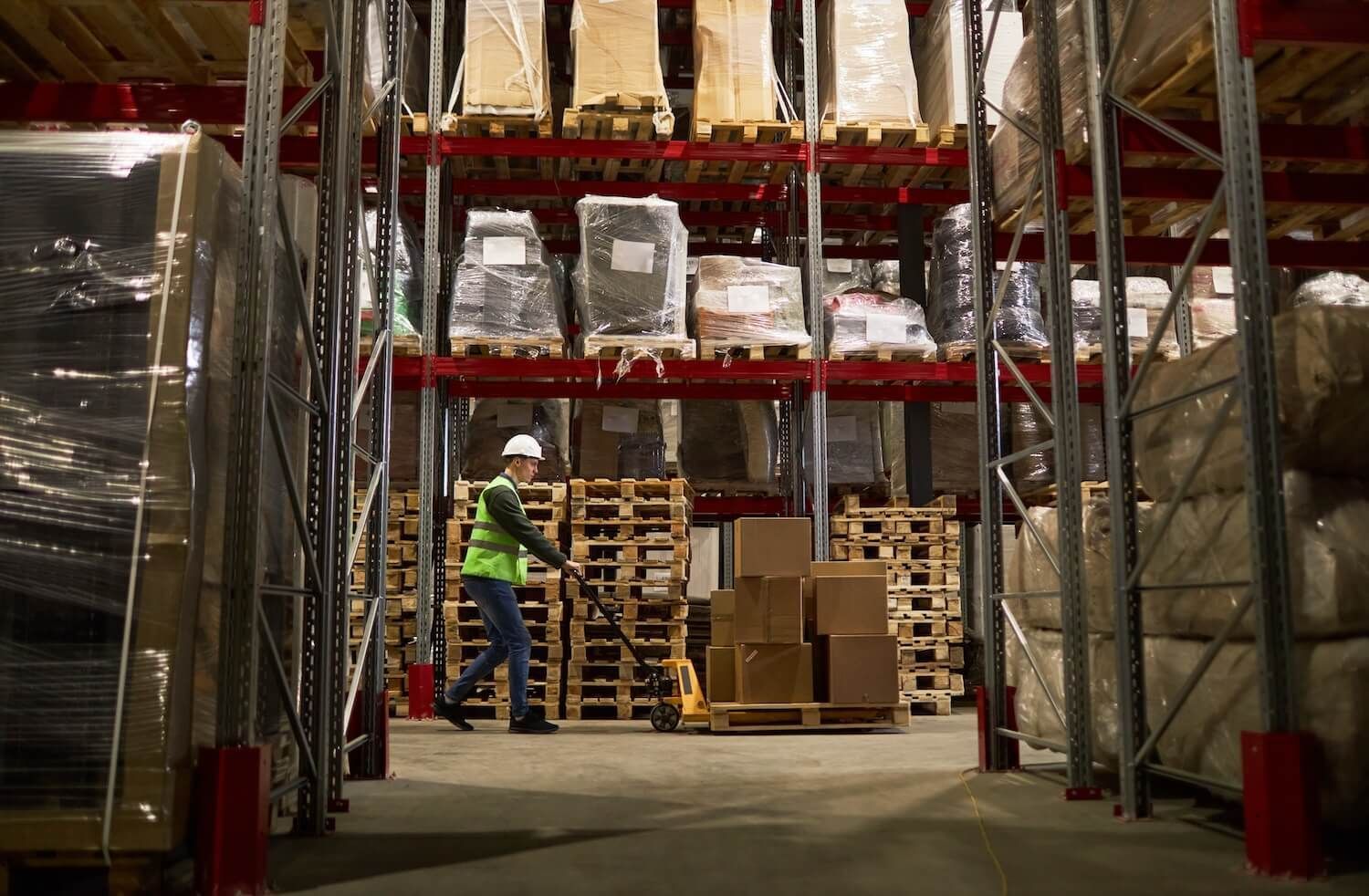Strategic Scaling: Utilizing Flexible Warehousing to Absorb Trade Shocks

The global marketplace, once perceived as a relatively stable and predictable environment for commerce, has been increasingly characterized by turbulence. Geopolitical tensions, the rise of protectionist policies, and the ensuing trade wars have introduced unprecedented levels of uncertainty into the intricate web of international supply chains. Businesses, regardless of their size or sector, are finding themselves navigating a landscape fraught with volatility, where carefully laid plans can be upended by a single policy announcement or tariff hike.
The repercussions of these trade shocks are far-reaching, impacting everything from raw material sourcing and manufacturing costs to final product distribution and consumer pricing. For many organizations, a critical pain point in this volatile environment lies in their warehousing strategies. Traditional, fixed-capacity warehousing models, while offering a sense of long-term stability in calmer times, are proving to be a significant impediment to agility and resilience in the face of trade-induced fluctuations. The stark reality is that businesses locked into rigid, long-term leases are often caught between the costly burden of underutilized space during periods of decreased demand and the operational nightmare of insufficient capacity when faced with sudden surges in inventory.
This article delves into the strategic imperative of embracing flexible warehousing solutions as a powerful mechanism for businesses to not only weather the immediate storms of trade wars but also to build a more adaptable and resilient supply chain for the long term. We will explore the limitations of conventional warehousing in this unpredictable climate, illuminate the diverse advantages offered by both on-demand and adaptable commercial warehousing models, and articulate a strategic framework for leveraging this flexibility to effectively absorb trade shocks, optimize inventory management, and ultimately safeguard the bottom line.
The Inherent Vulnerabilities of Traditional Warehousing in an Era of Trade Volatility
The cornerstone of traditional warehousing has long been the commitment to long-term leases, often spanning several years, for a fixed amount of storage space. This model was predicated on a relatively stable economic environment with predictable growth patterns and consistent demand. However, the disruptive forces of trade wars have exposed the inherent vulnerabilities of this rigid approach.
- The Crushing Cost of Underutilization: When trade disputes lead to decreased import volumes, reduced consumer demand for certain goods, or disruptions in supply chains, businesses with fixed-lease warehouses find themselves burdened with significant costs for space that remains largely empty. This idle capacity represents a drain on financial resources that could be better allocated to navigating the evolving market landscape. The inability to quickly downsize their warehousing footprint translates directly into reduced profitability and diminished competitiveness.
- The Crippling Constraint of Insufficient Capacity: Conversely, the unpredictable nature of trade wars can also trigger sudden spikes in demand. Businesses might rush to import goods before new tariffs take effect, or they might need to rapidly scale up inventory to meet unexpected shifts in consumer behavior driven by trade-related anxieties. In such scenarios, companies locked into fixed-capacity warehouses often find themselves scrambling for additional storage, facing potential bottlenecks in their supply chain, costly delays, and ultimately, the risk of losing sales due to stockouts.
- The Shackles of Geographic Immobility: Traditional warehouse leases typically tie businesses to specific geographic locations for extended periods. However, trade wars can necessitate significant shifts in sourcing strategies, manufacturing locations, and distribution networks. For instance, new tariffs might make a previously advantageous port economically unviable, or businesses might need to establish new warehousing facilities closer to alternative manufacturing hubs. The lack of geographic flexibility inherent in long-term leases can severely hinder a company's ability to adapt to these evolving logistical realities, leading to increased transportation costs and operational inefficiencies.
- The Absence of Scalable Services: Beyond just the physical space, traditional warehousing agreements often come with a fixed set of services. However, the needs of a business can fluctuate significantly in response to trade shocks. During periods of rapid inventory buildup, there might be a need for increased staffing for receiving and processing goods, while during slowdowns, these services might be largely redundant. The lack of scalability in associated warehousing services can lead to both unnecessary costs and operational bottlenecks.
Unlocking Agility and Resilience: The Strategic Advantages of Flexible Warehousing
In stark contrast to the limitations of traditional models, flexible warehousing solutions offer businesses the adaptability and responsiveness required to not only survive but thrive in the face of trade-induced uncertainty. This paradigm shift encompasses two key categories: on-demand warehousing and adaptable commercial warehousing.
On-Demand Warehousing: A Tapestry of Short-Term Solutions
On-demand warehousing operates on a fundamentally different principle from long-term leases. It provides businesses with access to a vast network of available warehouse space on a short-term basis, often with flexible rental periods ranging from days to months. This model empowers organizations to treat warehousing capacity as a variable cost, scaling their storage footprint up or down precisely as their needs dictate.
- Unparalleled Scalability for Dynamic Inventory Levels: The most significant advantage of on-demand warehousing lies in its inherent scalability. Businesses facing a sudden influx of inventory due to pre-tariff stockpiling or an unexpected surge in demand can rapidly secure the necessary storage space without being burdened by long-term commitments. Conversely, during periods of slower activity, they can drastically reduce their warehousing footprint, minimizing costs and maximizing resource efficiency.
- Optimized Cost Structures Through Usage-Based Pricing: The pay-as-you-go nature of on-demand warehousing ensures that businesses only incur costs for the space and services they actively utilize. This eliminates the financial drag of paying for unused capacity, a common pain point in traditional fixed-lease agreements, particularly during periods of trade-related slowdowns.
- Enhanced Geographic Agility for Shifting Supply Chains: On-demand warehousing platforms often offer access to a geographically diverse network of storage facilities. This allows businesses to strategically position their inventory closer to new sourcing locations, emerging markets, or alternative transportation hubs necessitated by trade policy changes. This agility can significantly reduce transportation costs and improve delivery times.
- Access to Variable and Specialized Services: On-demand warehousing providers typically offer a range of flexible services that can be tailored to specific needs and fluctuating volumes. This can include variable staffing for receiving, picking, and packing, as well as specialized handling equipment and technology, allowing businesses to adapt their operational capacity in tandem with their storage requirements.
Adaptable Commercial Warehousing: Embedding Flexibility in Traditional Structures
Recognizing the growing need for agility, forward-thinking commercial warehouse providers are evolving their traditional offerings to incorporate greater flexibility and scalability. This involves a departure from rigid, long-term contracts towards more dynamic and responsive agreements.
- Shorter and More Flexible Lease Durations: An increasing number of commercial warehouse operators are offering lease agreements with shorter terms or built-in clauses that allow for easier adjustments to the leased space based on predefined triggers or market conditions. This provides businesses with greater control over their long-term commitments and the ability to adapt to evolving trade dynamics without incurring significant penalties.
- Scalable Space Options Within Lease Agreements: Some commercial leases now include options for businesses to easily expand or contract their leased space within a certain range, providing a degree of built-in scalability to accommodate fluctuating inventory levels driven by trade-related events. This can be a more cost-effective solution for businesses that anticipate cyclical fluctuations in their storage needs.
- Variable Pricing Models Aligned with Utilization: Innovative pricing structures are emerging in the commercial warehousing sector that move away from purely fixed monthly rates towards models that incorporate elements of variable pricing based on actual space utilization or service consumption. This can provide greater cost predictability and ensure that businesses are not overpaying during periods of lower activity.
- Partnerships for Integrated Flexibility: Some commercial warehouse providers are forming strategic partnerships with on-demand warehousing platforms, offering their clients a hybrid solution that combines the stability of a core commercial lease with the on-demand flexibility to handle peak seasons or unexpected surges in inventory. This integrated approach can provide a comprehensive and cost-effective warehousing strategy for navigating trade uncertainties.

Strategically Deploying Flexible Warehousing to Absorb the Shocks of Trade Wars
The true power of flexible warehousing lies in its strategic application as a tool to mitigate the adverse effects of trade wars and build a more resilient supply chain.
Dynamic Inventory Management for Unpredictable Demand
The ability to rapidly scale storage capacity allows businesses to adopt a more dynamic approach to inventory management. They can strategically increase inventory levels in anticipation of tariff hikes or potential supply chain disruptions without the long-term commitment of traditional warehousing. Conversely, they can quickly reduce their storage footprint when demand softens or import restrictions take effect, avoiding the costly accumulation of unsold goods.
Building Supply Chain Resilience Through Adaptability
Trade wars often necessitate rapid adjustments to sourcing strategies, manufacturing locations, and distribution networks. Flexible warehousing provides the agility to adapt storage locations and capacity in tandem with these shifts. Businesses can quickly establish temporary storage near new manufacturing hubs or alternative ports, minimizing logistical disruptions and ensuring the continued flow of goods to market.
Optimizing Operational Costs in a Volatile Environment
By aligning warehousing costs more closely with actual utilization, flexible solutions offer significant opportunities for cost optimization during periods of trade-induced uncertainty. Businesses can avoid the financial burden of paying for unused space and scale their warehousing expenses in direct proportion to their operational needs, preserving crucial capital.
Enhancing Responsiveness to Evolving Market Dynamics
Beyond just mitigating the negative impacts of trade wars, flexible warehousing fosters a more responsive and agile supply chain overall. This agility allows businesses to quickly capitalize on new market opportunities that may emerge as a result of trade policy changes or shifts in global demand patterns. The ability to rapidly scale storage and logistics operations can provide a significant competitive advantage in a dynamic marketplace.
Mitigating the Risk of Stranded Assets
In the face of rapidly changing trade policies, businesses that rely solely on fixed, long-term warehousing arrangements face the risk of being stuck with underutilized facilities in locations that are no longer strategically optimal. Flexible warehousing minimizes this risk by allowing for shorter commitments and greater adaptability in response to evolving geopolitical and economic realities.
Charting a Course Towards Resilience: Embracing the Future of Flexible Warehousing
The era of predictable global trade may be behind us. The future is likely to be characterized by continued volatility and uncertainty, driven by geopolitical tensions and evolving trade policies. In this environment, businesses that cling to outdated, rigid warehousing strategies will find themselves increasingly vulnerable.
The strategic adoption of flexible warehousing solutions, encompassing both the dynamic agility of on-demand options and the embedded scalability of adaptable commercial agreements, represents a critical step towards building resilient and responsive supply chains. By embracing this paradigm shift, businesses can transform their warehousing operations from a fixed cost center into a strategic asset, empowering them to not only absorb the shocks of trade wars but also to navigate the broader uncertainties of the global marketplace with confidence and agility.
Discover how our comprehensive suite of flexible warehousing solutions can empower your business to adapt to the unpredictable landscape of global trade. We offer a diverse range of on-demand and adaptable commercial warehousing options, coupled with expert consultation and customized solutions designed to provide the agility, scalability, and cost-effectiveness you need to thrive in today's dynamic market. Let us be your partner in building a resilient supply chain that can weather any storm and capitalize on emerging opportunities. Contact Razr Logistics today to explore how flexible warehousing can unlock your business's full potential in an era of uncertainty.












 by
by